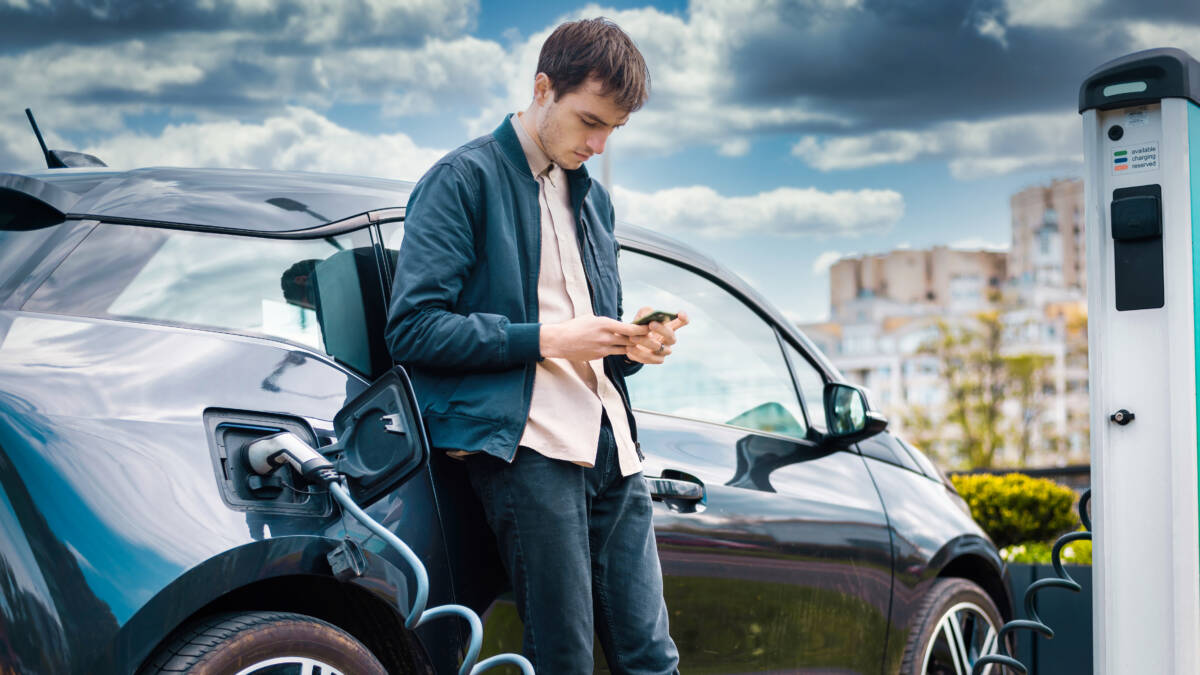Jakarta, February 20, 2023 – Decarbonizing the transportation sector is one of the key agendas to achieve Indonesia’s net zero emission target by 2060. The transportation sector is the second largest GHG emitter (23%), which road transport contributing 90% of the sector’s emissions, with total emissions in the energy sector closing to 600 MtCO2eq in 2021 (IESR, IEVO 2023).
In a low carbon scenario compatible with the Paris Agreement target (LCCP), emissions from transportation in Indonesia must decline to 100 MtCO2eq in 2050. Meanwhile, in the IESR’s calculation the entire energy sector, including transportation, must be near zero by 2050 to keep the global temperature rise below 1.5 °C. To achieve that, the electrification of transportation and utilization of other sustainable fuels should be prioritized.
One way to decarbonize road transport is by increasing the utilization of electric vehicles (EVs). The substitution of conventional internal combustion engine (ICE) vehicles with EVs is not only a solution to avoid direct GHG emissions from burning fossil fuels but will be a more economical choice given the high energy efficiency of EV technology. EVs are projected to represent more than 60% of vehicles sold globally by 2030. Hence, the supporting infrastructure for EVs in Indonesia, such as EV chargers, urgently needs to be prepared.
Despite the promises, people still doubt or even argue that EVs are not a truly GHG emission reduction solution. The reason is that the source of electricity for charging EVs still comes from fossil fuel power plants, particularly in Indonesia where about 67% of the electricity comes from coal-fired power plants (CFPPs). Moreover, EVs battery manufacturing processes are also highly energy-intensive and produce a high amount of GHG.
In this respect, the decarbonization of the transportation sector must be viewed from a long-term perspective with optimism. Concern regarding the source of electricity for EVs is indeed a great challenge to increasing EVs utilization. Therefore, EVs development plans should be integrated with the multi-sector decarbonization pathway because high EV adoption could potentially help another sector, namely the power sector.
The Bottleneck in Power Sector
One of the reasons for slow renewables development in Indonesia is the oversupply condition in the power system. Moreover, the system has a high reserve margin (power reserve), which is estimated to reach 56% in 2022 , while the typical reserve margin according to PLN’s RUPTL is in the range of 15-40%. The conditions are said due to the demand overestimation and the effect of the global pandemic.
Unfortunately, most of the new operating power plants are CFPPs which cannot operate flexibly because they are constrained by take or pay agreements. Meanwhile, some CFPPs, especially older ones, are constrained to operate flexibly due to their limited technical abilities such as slow ramping rates, high minimum load, and long start-up time.
Based on these issues, there should be an increase in electricity demand or the retirement of fossil-fuel generators, with or without intervention, to allow higher renewables penetration. In this regard, EV utilization development, with the proper strategy, can be used as a tool that helps minimize problems in the power system.
The high adoption rate of EVs could potentially absorb the excess electricity supply from the operating power generators. In IESR’s deep decarbonization scenario, the demand for transportation electrification will reach 136 by 2030 (approximately 28.6% of total electricity demand) [2]. In other words, the electrification of the transport sector can be a strategic approach to cut down the oversupply issue and make room for more renewables in the power system. Besides, electrification will significantly cut down the direct GHG emission and improve energy security through fuel import reduction.
Electric Vehicles Value in Power System
An electric vehicle is essentially a large battery connected to an electric motor and wheels. Simply, it is a moving energy storage asset. An EV car today has an average battery capacity of about 40 kWh which can be viewed as a valuable asset for the power grid. It is a fairly large capacity considering a home storage battery unit typically has a capacity of no more than half of the EVs’. Hence, any additional value of EVs should be enabled through vehicle-grid integration (VGI).
Various VGI schemes have been developed, namely, V1G (one-directional energy flow), V2G (bidirectional energy flow), V2B (vehicle to building), etc. Suitable integration strategies can benefit both EV owners and grid operators. Through V1G, for example, the grid operator may apply different charging tariffs at specific charging hours that would influence the charging behavior of EV owners. Grid operators can maintain the peak loads, avoiding additional operating costs or the need for capacity addition. In return, EV owners will get the incentive of low charging tariffs during off-peak hours.
In further implementations, VGI can be promoted to V2G. The EV fleets can collectively act like a stationary energy storage system (ESS) where the grid operator can buy electricity from EV’s battery to be supplied to the grid when needed. However, its implementation will require regulations related to interconnection.
In addition to regulations, VGI will require the development of supporting infrastructures relevant to the power sector development roadmap. Considering the penetration rate of renewables, the adoption rate of EVs, and today’s typical load profile, VGI may begin to be implemented through low tariff incentives at night so that EV owners do home charging overnight. However, once the power system has high solar PV penetration (as what the government plans for the future), there will be high electricity generation during the day. Don’t we need to prepare more public charging infrastructure? Or is there another strategy?

